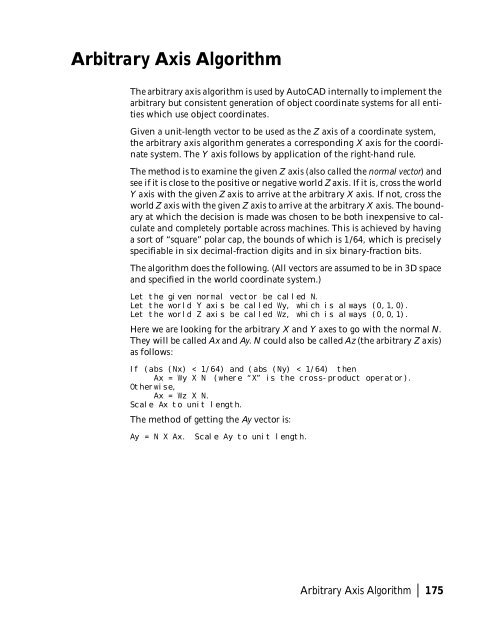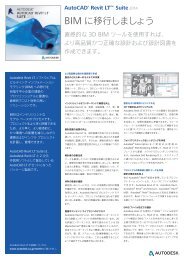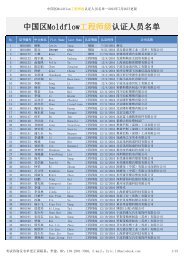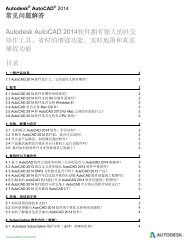You also want an ePaper? Increase the reach of your titles
YUMPU automatically turns print PDFs into web optimized ePapers that Google loves.
Arbitrary Axis Algorithm<br />
The arbitrary axis algorithm is used by AutoCAD internally to implement the<br />
arbitrary but consistent generation of object coordinate systems for all entities<br />
which use object coordinates.<br />
Given a unit-length vector to be used as the Z axis of a coordinate system,<br />
the arbitrary axis algorithm generates a corresponding X axis for the coordinate<br />
system. The Y axis follows by application of the right-hand rule.<br />
The method is to examine the given Z axis (also called the normal vector) and<br />
see if it is close to the positive or negative world Z axis. If it is, cross the world<br />
Y axis with the given Z axis to arrive at the arbitrary X axis. If not, cross the<br />
world Z axis with the given Z axis to arrive at the arbitrary X axis. The boundary<br />
at which the decision is made was chosen to be both inexpensive to calculate<br />
and completely portable across machines. This is achieved by having<br />
a sort of “square” polar cap, the bounds of which is 1/64, which is precisely<br />
specifiable in six decimal-fraction digits and in six binary-fraction bits.<br />
The algorithm does the following. (All vectors are assumed to be in 3D space<br />
and specified in the world coordinate system.)<br />
Let the given normal vector be called N.<br />
Let the world Y axis be called Wy, which is always (0,1,0).<br />
Let the world Z axis be called Wz, which is always (0,0,1).<br />
Here we are looking for the arbitrary X and Y axes to go with the normal N.<br />
They will be called Ax and Ay. N could also be called Az (the arbitrary Z axis)<br />
as follows:<br />
If (abs (Nx) < 1/64) and (abs (Ny) < 1/64) then<br />
Ax = Wy X N (where “X” is the cross-product operator).<br />
Otherwise,<br />
Ax = Wz X N.<br />
Scale Ax to unit length.<br />
The method of getting the Ay vector is:<br />
Ay = N X Ax.<br />
Scale Ay to unit length.<br />
Arbitrary Axis Algorithm | 175












